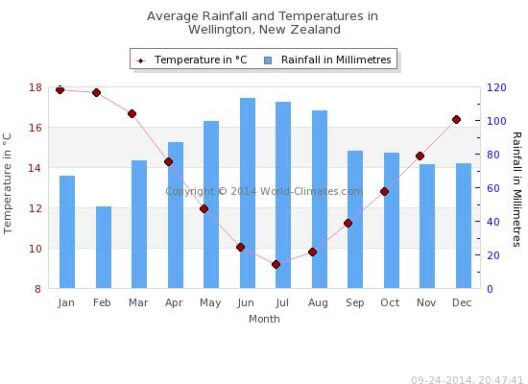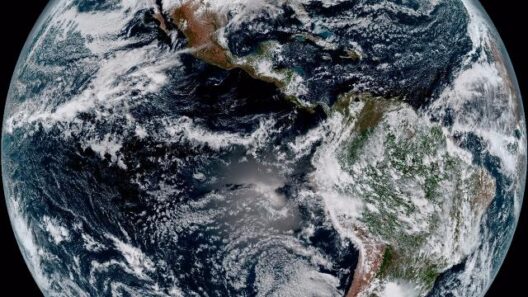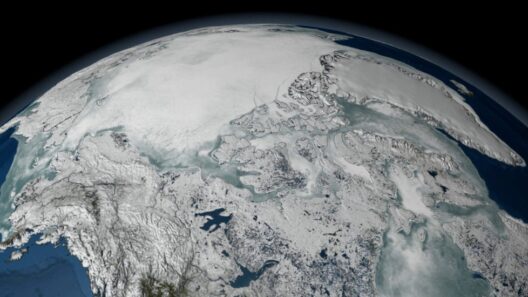The phenomenon of rising ocean levels is a crucial aspect of contemporary discussions surrounding climate change. Many individuals observe coastal erosion and increased flooding, attributing these occurrences primarily to global warming. However, this perception often oversimplifies a multifaceted issue. Understanding the various factors contributing to the rise in ocean levels is essential for a comprehensive grasp of this pressing global challenge.
Firstly, global warming undeniably plays a pivotal role in increasing sea levels. The Earth’s average temperature has risen significantly due to anthropogenic greenhouse gas emissions. As temperatures escalate, polar ice caps and glaciers melt at an accelerated pace. Notably, Greenland and Antarctica are experiencing extensive ice loss, contributing substantially to the elevation of sea levels. According to scientific assessments, the melting of these ice masses is responsible for approximately one-third of current sea-level rise.
In addition to melting ice, thermal expansion is an essential yet often overlooked component of sea-level rise. As ocean temperatures rise, water expands. This thermal expansion leads to an increase in water volume, further contributing to rising sea levels. As the planet continues to warm, thermal expansion is expected to account for a significant portion of future sea level increases.
Another salient factor is the natural variability exhibited by oceans. The Earth’s climate has undergone numerous cycles over geological time, characterized by fluctuating temperatures and sea levels. For instance, during glacial periods, sea levels are markedly lower than in interglacial periods. This historical context is critical as it underscores the understanding that while human-induced factors are currently exacerbating sea-level rise, natural cycles also contribute to observed changes. Such periods of warming and cooling are often precipitated by complex interactions between the Earth’s orbit, axial tilt, and solar radiation.
Additionally, regional geological changes must be considered when examining sea-level rise. Tectonic activity — including subsidence and uplift — can alter land elevation, significantly impacting local sea levels. For instance, areas prone to subsidence may experience a more pronounced increase in relative sea level, even if global averages remain unchanged. This geological variability adds layers of complexity to the discourse about rising oceans, highlighting that the effects are not uniform across the globe.
Urbanization and the alteration of natural landscapes due to human settlements also contribute to the perception of rising oceans. Coastal cities often experience subsidence as a result of groundwater extraction and the weight of infrastructure. Moreover, the construction of sea walls and reclamation projects can inadvertently exacerbate local flooding by disrupting natural water flow and sediment transport. Societal responses to rising sea levels can sometimes compounding the problem rather than alleviating it.
Moreover, the interaction between atmospheric phenomena and ocean levels cannot be overlooked. For example, atmospheric pressure and wind patterns influence ocean currents and water distribution. Events such as El Niño can lead to temporary variations in sea levels in certain regions due to shifts in ocean currents driven by changes in wind patterns. Such fluctuations can result in local sea-level changes that may lead to misleading conclusions about broader trends.
Understanding the interplay of these different factors can illuminate the pathways through which human activities exacerbate the natural processes of sea-level rise. It emphasizes the importance of addressing both global warming and local ecological practices as a cohesive strategy for tackling the challenges posed by rising oceans.
For instance, proactive measures such as reducing greenhouse gas emissions will mitigate global warming effects, directly impacting the rate of ice melt and thermal expansion. Concurrently, implementing sustainable water management practices can help combat subsidence in urbanized coastal areas. By enhancing the resilience of coastal communities through better infrastructure and planning, society can avert some of the most detrimental impacts of rising oceans.
Another critical component of this discourse revolves around policy-making and international cooperation. The looming threat of rising sea levels necessitates a unified approach to climate action. Global forums such as the United Nations Framework Convention on Climate Change (UNFCCC) facilitate collaborative efforts aimed at curbing emissions and fostering adaptive capabilities in vulnerable regions. Importantly, the conversation about rising oceans must include a focus on equity and justice, ensuring that the most affected communities receive support and resources to confront the impending challenges.
In summation, while global warming is a principal factor fueling the rise of the oceans, it is imperative to appreciate the myriad of contributing elements that collectively shape this phenomenon. From natural geological changes to human-induced factors, the modern landscape of climate science reveals a complex tapestry that informs our understanding of sea-level rise. Addressing this issue requires not just awareness of the science but an unwavering commitment to sustainable practices and international collaboration. Only by acknowledging the interconnected nature of these causes can effective action be implemented to protect our coastlines and preserve the delicate balance of our ecosystems.







